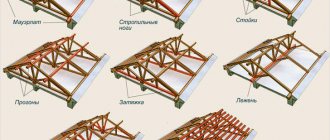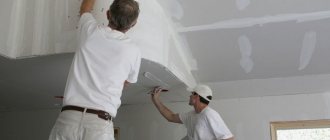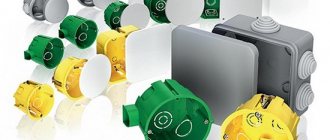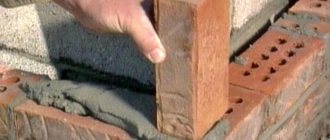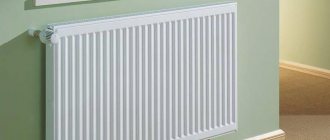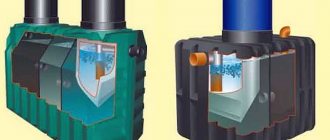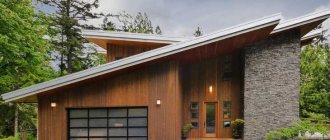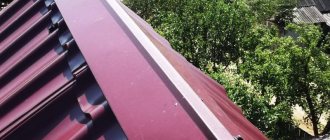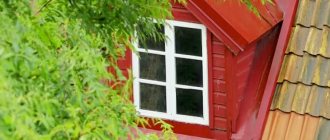Basic rules for laying vapor barrier film
After determining which side of the room or insulation you need to lay the vapor barrier material on, you can proceed directly to its installation. In this case, the following rules must be observed:
- First, the installation of heat-insulating and sound-proofing material is carried out, followed by a vapor barrier film.
- Secondly, the film should be well stretched, there should be no sagging areas.
- Third, the vapor barrier material is attached using ordinary tape (adhesive tape). You can also use nails with a wide head (30 cm pitch) or a furniture stapler as fastening elements, which will greatly facilitate the work and reduce the time it takes to complete it. The film can be secured with wooden slats, which are screwed in increments of 30 cm.
- Fourth, individual sheets of vapor barrier film are laid with an overlap of up to 15 cm. In this case, it is necessary to make ventilation gaps up to 5 cm wide. These are the general rules for using vapor barrier material, but when laying it on different bases, the roof has its own characteristics.
Tools and materials
To carry out steam and waterproofing work on a pitched roof you will need:
- vapor barrier membrane type A or AM;
- vapor barrier film type C (B);
- double-sided tape or adhesive tape;
- fasteners (special nails, staples, wooden planks);
- construction stapler, if staples are used;
- nail hammer;
- roulette;
- construction knife or scissors;
- scaffolding, stepladder or sawhorse when working in the attic;
- ladder when working outside.
What is a roofing cake?
In the process of studying the question of how to properly lay corrugated sheets, you will need to understand the nuances of arranging the roof structure. At the beginning of construction work on the construction of the roof, a rafter system is installed. This procedure must be carried out in compliance with all technical standards, since the rafters are subject to significant static and dynamic loads during operation. It is better if this work is performed by specialists who have the appropriate skills in designing and installing the structure.
Before laying corrugated board over the finished rafter system, you need to decide on the lining material. This is directly influenced by the type of roofing structure and the characteristics of the material itself. For example, if the role of waterproofing is performed by a volumetric vapor-permeable diffuse membrane, there is no need to install a vapor barrier. Some insulation materials withstand moisture and are capable of transmitting steam. Roofs can be warm or cold - this is influenced by the purpose of the room.
If we are talking about an attic room, then the roofing cake will include the following elements:
- Vapor barrier.
- Internal lathing.
- Insulation.
- Waterproofing.
- Counter-lattice.
- Lathing.
- Profiled sheet.
A cold roof requires only a waterproofing layer, which must have vapor-permeable characteristics. This will allow excess moisture in the room to leave it freely: in this way the attic will be saved from the accumulation of dampness.
It takes much less time, effort and money to install a cold roof than to build an insulated structure. After arranging the roofing pie, you can lay the roof with corrugated sheeting.
What is the difference between hydro- and vapor barrier
Most users do not feel the difference between hydro- and vapor barrier. Many people think that these are the same thing. However, the objectives of these types of protection differ. Waterproofing is designed to cut off moisture, water in its usual form. As a rule, a waterproofing film is installed between the roof and the insulation layer to establish a barrier against rain or melt water. The main task of waterproofing is to neutralize damage from leaks.
Vapor barrier works with gaseous moisture in the air. Its task is to completely cut off contact of surfaces with internal air. If waterproofing is most often capable of allowing steam to pass through, retaining liquids, then vapor barrier is an absolutely impenetrable film. It is no coincidence that an ordinary polyethylene sleeve is often used as it. An example of the simultaneous use of both types of protection is the insulation of fibrous types of insulation (mineral wool). An impenetrable vapor barrier is installed on the attic side to form an airtight barrier against airborne moisture. On the roof side, a waterproofing membrane is used to ensure removal of residual moisture from the heat insulator. At the time of installation, the mineral wool contains air with a certain amount of water vapor. It must be allowed to escape freely from the material, otherwise moisture will condense on the inside of the film. For this purpose, various membranes with one-way permeability are used.
Hydro- and vapor barrier are often confused with each other. The situation is complicated by the mass production of combined materials capable of performing several tasks at once. When choosing an insulator, it is recommended to first find out exactly its purpose and specifics, and clarify the installation rules. This will avoid mistakes, waste of time and money.
Installation of vapor barrier
It doesn’t matter whether you are making a vapor barrier for a flat roof or working with a gable roof - the film or membrane should be installed only after laying the insulation. Features of vapor barrier installation:
Features of vapor barrier installation:
- The canvases can be installed both vertically and horizontally.
- If you prefer horizontal installation, start installation from the top.
- Lay the pieces of canvas with an overlap of at least 10 cm. Be sure to seal the seams with single-sided or double-sided adhesive tape.
- Choose a wide ribbon of at least 10 cm.
- Double-sided tape is glued inside the overlap - first stick it on the bottom layer, then remove the protective coating and fix the top one with the overlap.
- If you are laying a vapor barrier along the rafters without rough filing the insulation, overlap and fix the sheets directly on the rafters.
- The vapor barrier is attached to the wooden sheathing or rafters using a construction stapler or galvanized nails (they do not rust).
- It is recommended to strengthen the places where the canvases are glued with pressure strips. This advice is especially relevant for roofs with a slope of up to 30 degrees and with loose thermal insulation.
- At the points of contact with passages, hatches or roof windows, a so-called attic apron should be installed through the roof, which is usually included in their package. If it is not there, stick 2-sided butyl tape around the perimeter of the window frame or opening.
- Where water pipes pass through the roof, fold the vapor barrier material downwards, wrap it around the pipe and seal it tightly with electrical tape.
When the vapor barrier is laid, attach bars treated with antiseptics on top of it at a distance of 50 cm from each other. This way, you will create an air corridor where condensation will quickly evaporate, and the film will not touch the ceiling cladding. If you are using a vapor barrier membrane, it is not necessary to install bars. But they will come in handy to occupy this space with various communications. If you plan to decorate the interior of the house with plasterboard, use a galvanized metal profile instead of wooden blocks.
Errors when installing vapor barriers
Very often, when arranging a roofing pie, builders make mistakes that lead to fatal consequences. If the location of the insulating layers is mixed up, the roof may become unusable after just a year of operation.
We have prepared a list of the most common mistakes when installing vapor barriers:
- The junction points of the film are not sealed tightly, as a result of which the effectiveness of the vapor barrier is reduced to a minimum, the insulation becomes damp, and the rafter structures begin to rot.
- Using narrow adhesive tape to seal seams - during use, tape 5 cm wide or less will simply come off. The recommended tape width is 10 cm or more.
- There is no deformation margin when working with window openings - any house shrinks, so you need to leave a margin in the form of a fold of 20-30 mm.
- The film around the roof windows is not protected by finishing from the inside - if this is not done, after a few months of operation, the vapor barrier will completely become unusable and collapse under the influence of sunlight.
- The film envelops the rafters - if the vapor barrier material goes around the rafter legs, moisture will penetrate to the wooden elements, as a result of which they will begin to rot.
- Where the vapor barrier is adjacent to the internal walls of the house, shafts or chimney, it is necessary to take into account the specific irregularities to which the material will be attached in order to ensure a tight fixation.
- If you are attaching the film to a rough brick wall or unplaned wood surface, this can only be done using polyurethane, acrylic glue or synthetic rubber.
- Do not use polyurethane adhesive tapes or butyl rubber tapes as they do not adhere well and may soon peel off from the surface.
The penetrating ability of water vapor is extremely high, so you should approach the vapor barrier device extremely responsibly. In addition to the popular Izospan, TechnoNIKOL roof vapor barrier is widely used today. The most important thing is to choose the materials correctly and install them in the right sequence, then the roofing pie will last for decades without repair.
Why do you need a vapor barrier?
There is probably no person living in a region with a variable climate who would not encounter condensation on windows during the cold season (an explanation of the physical processes occurring is given in the work “Why do plastic windows fog up and what to do about it?”). The same processes occur in any other structural elements of the building. However, condensation does not form on their surface, because at the design stage the so-called “dew point” is hidden inside the wall, floor, and ceiling.
Calculated “dew point” at a wall without insulation.
When thermally insulating a house or apartment, the owner violates the calculated temperature distribution schedule inside the insulated structure. As a result, the “dew point”, at which steam molecules condense into a wet film or drops of water appears either inside the insulation or on the surface of the insulated structure. In both cases, there is nothing good: the thermal insulation properties of insulating materials are reduced, and a base appears for the growth of colonies of microorganisms: mold, fungus.
Insulating the wall from the outside changed the thermal balance in the thickness of the wall, moving the dew point into the insulation layer.
At the same time, it makes no difference on which side the insulation is carried out. In any case, the same processes occur.
It seems that a layer of insulation from the inside is a very bad solution, leading to a constantly wet wall.
The solution to the problem was suggested by heating engineers. Their argument is simple: steam turns into water at a certain ratio of humidity and temperature. If the access of steam molecules to the “dew point” is limited, then there will be no condensation. The builders instantly turned the theoretical hint into a practical solution. This is how vapor barrier materials appeared, the main function of which is to put a barrier to the movement of water in a vapor state.
Vapor barrier materials
Today you can find a lot of roofing materials on the construction market. Most of these are polyethylene-based films. They are waterproofing, vapor barrier and antioxidant. The latter are special in that they are covered on the inside with an absorbent fleecy fabric layer, which actively collects condensation, preventing it from getting onto the next layer of roofing cake.
Previously, the main material for roof vapor barrier was glassine. Today it is used only by extremely economical builders, but if you look at the performance characteristics of glassine and compare them with the qualities of modern materials, the benefits of the latter will be obvious.
Depending on the physical and technical parameters, three types of vapor barrier films can be distinguished:
- Polyethylene - used not only for steam, but also for waterproofing. There are perforated and non-perforated films. In any case, during installation it is recommended to reinforce it with light mesh or fabric. Perforated films mainly serve to provide waterproofing, non-perforated films serve as vapor barriers. It would seem strange, because the “holey” surface allows water to pass through, but the holes in the film are so small that water simply does not have time to seep through them. They serve for better ventilation of the roofing pie. There are also foiled polyethylene films, one side of which is capable of reflecting heat coming from below (from the house). Therefore, such material should be laid with the mirror side down. Polyethylene vapor barrier is supplied in rolls. During the installation process, sections of material are glued together with special seals and connecting adhesive tapes. Thus, a dense monolithic layer is obtained.
- Polypropylene - are characterized by higher strength compared to polyethylene films. They are used mainly for laying a waterproofing layer, but can also serve as a vapor barrier. On one side they have an antioxidant coating made of viscose-cellulose fabric.
- Diffuse is a material that appeared just a few years ago. It is a well-ventilated membrane that has increased vapor permeability, but does not allow moisture to pass through. The main advantage of such a “breathable” vapor barrier is that it does not require arranging a ventilation gap in the under-roof space. This way you save space and time. A diffuse vapor barrier film works very simply - when steam passes through it, it settles on the rough layer, is absorbed into it and dries evenly, leaving the insulation dry and unharmed. There are single- and double-sided films. Single-sided can only be laid in a certain way on the insulation, double-sided - in any way you like.
All film materials used for vapor barriers must have good elasticity, be tear-resistant and as comfortable as possible to use.
It is extremely important that the vapor barrier film does not tear during fixation, but wraps around the fastening element. Even in case of accidental mechanical damage to the roof, for example, due to a tree branch falling during a hurricane, the vapor barrier should maintain its integrity, minimizing losses
Ideally, the thickness of the roof vapor barrier should be such that the material can withstand the load of thermal and waterproofing if the sheathing and rafters fail.
Vapor barrier with isospan
One of the most popular materials on the domestic market is isospan roof vapor barrier. It is relatively inexpensive, has impeccable performance characteristics, durability and ease of installation. Izospan can be used for waterproofing and as a vapor barrier at the same time.
The manufacturer offers several different modifications of Izospan, each of which is intended for a specific purpose, but there are also universal films
Therefore, it is very important to clarify the characteristics of the selected material before purchasing, so as not to accidentally buy the wrong variation of Izospan
Izospan B is widely used among professional builders and self-taught owners. It can be combined with any type of roofing. In addition to protecting the insulation from moisture, it does not allow microfibers from the cake to fall off inside the room, as is often the case with other materials.
Why do you need a roof vapor barrier?
Why do you need a roof vapor barrier?
The vapor barrier layer protects the roof from the penetration of water vapor into the thermal insulation. The fact is that most insulating materials have a porous structure, since the air they contain acts as a heat insulator. When it comes into contact with a colder environment, the steam turns into condensate, which is retained in the voids.
This can lead to disruption of the functionality of the heat-insulating material, as well as the occurrence of decomposition and rotting processes in the summer. In winter, freezing water expands, thereby destroying the bonds between the cellular elements.
The release form of vapor barrier films is a roll.
Vapor barrier can be made from various materials. Some of them have additional positive properties that increase the efficiency of operation of the building’s interior. Installing a vapor barrier on a roof is not as difficult as it seems at first glance, but it requires a careful approach and accuracy.
Materials used and their installation
To resolve the issue of which vapor barrier to choose for roofing, the industry produces the following materials:
- Vapor-proof films. Used for all types of roofs and roofing coverings. They are laid directly on the insulation with an overlap of 10 cm; the seams are sealed with tape to seal. The sheathing is installed while maintaining a ventilation gap of about 5 cm. It is recommended that fastening to the rafters be done with thin slats. Popular: Russian “Izospan”, German “Delta” and “Tyvek” (manufactured by Luxembourg). The latter is the most expensive, but higher quality and durable.
- Films made of antioxidant materials. The inner side, facing the inside of the attic, consists of fleecy fabrics on which condensation collects and then evaporates without penetrating the insulation. Installation is similar to vapor-tight ones. The most commonly used film is SVITAPFOL AC.
- Diffuse membranes. Available single- and double-sided. The first carry pairs in only one direction, so they are laid on a certain side. Based on the number of layers, they are distinguished between single- and multi-layer. In multilayer ones, condensate accumulates with its gradual release. Membranes are thin, strong and durable, but are expensive. They are laid close to the heat insulators and do not require a gap.
Installing a roof vapor barrier with membranes is an effective modern method.
The seams are sealed using a stream of hot air. On flat roofs with a concrete base, bitumen membranes fused to the concrete work well. The entire surface is completely enveloped in bitumen, creating a completely impenetrable coating, including fastening elements. Vapor barrier materials from the companies TechnoNIKOL, Bikroelast, and Linokrom are of high quality. The only disadvantage of bituminous materials is their significant weight.
Laminated membranes, consisting of reinforced films laminated on both sides and a foil screen (food-grade aluminum), are fixed directly to the thermal insulators on the room side with a mandatory ventilation gap.
The characteristics of vapor barrier and roofing materials must match in quality and durability, because the need to replace the vapor barrier layer will lead to a rework of the entire roofing pie.
The installation of a roof vapor barrier is extremely important for the durability of the entire building and the conditions for comfortable living in it. Improperly performed vapor barrier or its absence leads to moistening of the elements of the rafter system with the appearance of fungus and mold, loss of thermal properties by the insulator (with an increase in the humidity of the insulation by 5%, its characteristics deteriorate 2 times)
Which side is the vapor barrier for the roof laid on?
The principle of installation of vapor barrier materials depends on which side the layer responsible for repelling water vapor is located:
- ordinary and reinforced polyethylene films, as well as membranes of type A and AM can be laid on the insulation on either side. Anti-condensation vapor barriers are laid with the smooth side towards the insulation, and the fleecy side towards the vapor formation. Foil elements are laid with a metal layer inside the room, since this is where the light coming out of the building should be reflected heat. Type B membranes are laid with the film side to the thermal insulation layer. Type C and D membranes must be adjacent to the insulation with their rough side.
We have figured out which side to lay the vapor barrier on the roof, now we will look in detail at how to properly lay the vapor barrier on the roof.
Role and functions of the roof
To keep the house warm, dry and easy to breathe, a competent combination of different design solutions is necessary.
When choosing the design and shape of the roof, it is necessary to take into account not only its functional, but also its decorative and artistic qualities.
The roof experiences the greatest temperature, atmospheric, and mechanical loads from the outside, as well as exposure to air and moisture from inside the room, so the technology of constructing it with your own hands does not tolerate negligence.
Factors of environmental influence on roof structure.
Roof functions:
- Be warm (thermal insulation).
- Be waterproof (waterproofing).
- Be resistant to mechanical stress.
The first and third functions can be achieved with your own hands by simply using durable roofing (tiles, metal, slate...) and reliable thermal insulation (damask, mineral wool, expanded clay...) materials, but to achieve one hundred percent waterproofness, a rather complex prefabricated filling is required.
In this case, it is necessary to provide both external roof waterproofing and internal vapor barrier.
Video about the functions and construction of vapor barriers
Video about steam formation and the need for a steam barrier:
How does the vapor barrier layer work in an insulation pie:
Specifics of laying vapor barrier materials:
Vapor barrier in insulation systems is of great importance. Without it, the thermal properties of the building are significantly reduced, and the time between current and major repairs is reduced. It is important not only to arrange steam protection, but also to carry out the work in accordance with technological rules.
Choosing the right material for the roof
The modern construction industry offers a large selection of special films for installing vapor barriers. They perform the same function, but have different physical properties and quality indicators. There are three types of materials:
- Waterproofing films. Used to prevent steam from entering the heat-insulating layer. They have a special micro-perforation of the internal structure, due to which water vapor can pass through the coating into the external space. They must be installed in such a way that the film lags behind the roof covering by the size of the sheathing. This ventilation gap allows air to circulate between the outer and under-roof space, improving vapor barrier. Thus, a material that has one-sided permeability to water vapor keeps the insulation and structures dry.
- Anti-condensation films. They have a special absorbent layer of fleecy fabric applied to their inner surface. It retains moisture, preventing it from draining onto the insulation. Thanks to air circulation in the ventilation gaps, it subsequently disappears quite quickly. The material allows for reliable vapor barrier and improves the thermal insulation properties of the insulation. The anti-condensation film must be laid as an adsorption layer to the inside of the room. In this case, the pitch of the rafters cannot exceed 1.2 m. It is secured using a counter-lattice with a small ventilation gap.
- Vapor-proof films. Form a protective barrier on the inside of the thermal insulation layer of the roof. They can be equipped with a special reflective aluminum foil that is layered onto the material. The foil is positioned in such a way as to reflect part of the radiant energy into the room, which creates a kind of thermos effect. The film is mounted close to the insulation with a mandatory ventilation gap, which prevents the formation of condensation on the inside of the material. Perfectly protects the structure from moisture formation and heat loss.
Proper use of vapor or waterproofing films in construction allows you to extend the service life of the roof and the structure as a whole.
When choosing a material, experts recommend paying special attention to:
- Vapor permeability. The value characterizes the speed with which the vapor pressure equalizes between media separated by a vapor-proof film. The indicator depends on the structure and thickness of the material. The thicker the film, the lower the vapor permeability.
- Strength. The greater the inherent strength of the material, the more reliable the finished coating will be. In addition, in the case when the heat-insulating layer loses its original elasticity and sags, the dense film will not allow the insulation to collapse under the influence of gravity.
- Fire resistance. A necessary condition for ensuring fire safety.
- Environmental friendliness. The material must be made from safe raw materials using “clean” technologies.
- Durability. The longer the service life, the less often you will have to repair and redo the roofing pie.
The vapor barrier must be installed along the internal contour without creases, cracks or holes
Installation of a vapor barrier layer
The difference in the partial pressure of water vapor during the cold season between the interior of the room and the street leads to an increase in the amount of moisture tending to penetrate through the roofing cake to the outside. To stop this process, a high-quality vapor barrier layer is needed. To create it, dense high-molecular materials characterized by low vapor permeability and sealed fasteners are used.
For high-quality fixation of vapor barrier it is necessary:
- mount sheets or webs of material overlapping. The overlap of adjacent fragments must be at least 10 cm;
- To fasten the coatings, use special nails or self-tapping screws with a rubberized head, ensuring tight contact when twisting or driving in. It is possible to use a construction stapler, the staples of which minimally deform the material and seal the penetration site;
- when installing combined materials (polymer with reflective aluminum foil or non-woven geotextile), the smooth side of the polymer layer should be facing the insulation;
- It is necessary to leave a gap between the vapor barrier and thermal insulation coating to ensure ventilation and prevent moisture accumulation.
Video: Condensation on the roof + incorrect vapor barrier. Roof repair from Krovmontazh
The need for vapor barrier
Many home owners have little idea what problems a vapor barrier solves. Meanwhile, this is a very important and responsible system for protecting the roof and rafters from moisture. The air inside the house is always oversaturated with water vapor. This is moisture released from various sources:
- breathing of people and animals;
- release of steam during cooking;
- increasing air humidity when using showers and taking a bath;
- evaporation from ironing clothes, watering plants, from aquariums, etc.
The concentration of vapor in the indoor air of a living space is much higher than outside. The steam tends to go beyond and actively spreads throughout the room. First of all, it goes to the attic. If the roof is not protected, its entire surface will become covered with condensation. This is especially pronounced during the cold season, or at night. The settling moisture flows down the plane of the roofing and is absorbed into the rafters, which swell and begin to rot. Mold and mildew appear, and the wood is destroyed. Along with it, all metal elements rust - fasteners, connecting parts and other components.
Roof insulation is used to protect structures from moisture. A multi-layer insulation cake is installed, one of the elements of which is a vapor barrier. A continuous barrier for moist air appears, preventing contact with cold surfaces, which eliminates the formation of condensation. The role of the vapor barrier is to protect the heat insulator from moisture absorption. It is noteworthy that it is laid on both sides - on the roof side, to cut off possible moisture from the outside, and from the inside, to protect against internal steam.
Attention! The danger of roof contact with moist air is relevant only for heated (living) attic spaces. For unused attics, it is more important to properly insulate the floors.
Choosing a vapor barrier
Vapor barrier, namely vapor barrier film, is an important component of the “roofing pie”
The vapor barrier film is attached directly to the rafter using a construction stapler.
It ensures the release of accumulated condensate and protects thermal insulation materials so that they do not get wet.
The vapor barrier film is attached directly to the rafter using a construction stapler, with an overlap of at least 10 cm, the roofing sheathing is laid on it, and only then the roofing material (slate, corrugated sheeting, metal tiles, etc.). It is advisable to glue the joints of the film with construction tape (tape).
In addition, vapor barrier is also done from the inside of the room. In this case, the film is laid on the inside of the insulation, the counter-battens are stuffed and sheathed with finishing material (gypsum fiber board, siding, OSB, etc.).
It is necessary to do a vapor barrier, since vapors, due to the temperature difference outside and in the heated room, can settle on the insulation, as a result the thermal insulation material becomes damp and will last much less. And thanks to the highly permeable vapor barrier, this condensate is released through the ventilation gaps.
Types of vapor barrier
There are many types of vapor barrier and combined materials on sale. They are made from different materials and are designed to work in certain conditions. Let's look at the main types of vapor barrier materials:
Single layer polyethylene films
This is the simplest and cheapest material, which makes it the most popular. Both specialized types and a regular polyethylene sleeve are used as vapor barriers. The only drawback of the material should be considered its relatively low strength - when laying and fastening, ruptures or cuts of the canvas often occur.
Polyethylene films with reinforcement
This is a type of ordinary polyethylene fabric into which a reinforcing mesh is fused to increase mechanical strength. As a result, the film stretches less and can withstand increased loads. However, manufacturers have not yet been able to achieve ideal manufacturing technology. In the areas where the reinforcing mesh and film are connected there are weakened areas with microcracks that can allow steam to pass through.
Important! Common disadvantages of polyethylene materials are sensitivity to low temperatures and ultraviolet radiation. The fabric exposed to these influences loses strength and becomes brittle and brittle. Therefore, when choosing insulation, you should take into account the operating conditions and the placement of the film.
Anti-condensation film
This is a vapor-waterproofing film created to solve a variety of problems. It can be used on the inside and outside of the roofing pie, allowing installation with either side inward or outward. The choice of installation type depends on operating conditions, type of thermal insulation and other factors. It is a two-layer fabric with a polypropylene base and an additional layer of non-woven textiles. The material is capable of performing combined tasks - polypropylene retains moisture in any form and prevents wind from blowing. The canvas has a pile that can retain moisture in large quantities.
This feature allows you to keep condensation from forming drips and puddles. The surface is simply moistened a little and dries without causing any harm. As a rule, anti-condensation sheets are installed under metal roofing coverings - corrugated sheets, metal tiles, etc. According to manufacturers, such a vapor barrier can extend the life of the roof by 50%.
Polymers with foil layer
Foil films have an energy-saving effect. In parallel with cutting off humid air, they can reflect infrared rays back into the room. This allows you to retain heat and reduce the cost of heating your attic. When installing, it is important to position the canvas correctly - the foil layer should be directed inside the room. Considering the specificity of films with an additional reflective layer, they are used only for indoor installation. They are useless when placed between the roof and the heat insulator, although there is no fundamental error in this method. As a vapor barrier, these materials are reliable and trouble-free, but it will be impossible to use a reflective layer.
Membranes
Strictly speaking, membranes should not be classified as vapor barrier materials, but as extended action waterproofing materials. They are made of polyethylene or polypropylene fabric treated with special perforation. The size of the holes is so small that it allows moisture to pass through only at the molecular level, but not in liquid form. There are different types of membranes:
- diffusion (capable of transmitting up to 1000 mg/m2 of water vapor per day);
- superdiffuse (from 1000 mg/m2);
- anti-condensation (has a fleecy layer that holds condensation in place).
Scope of application
Vapor barrier is usually used:
- for the roof;
- for the ceiling;
- for the walls of a wooden house and more;
- for the floor.
Roof vapor barrier
Roof vapor barrier is required in order to protect the insulating material from rising vapors. The absence of a barrier means the presence of moisture in the thermal insulation raw material, which is fraught not only with its destruction and loss of thermal insulation properties, but also with the formation of mold and mildew on the building structure. And, as you know, it’s not easy to get them out.
- internal lining;
- vapor barrier;
- rafter system;
- thermal insulation;
- wind and waterproof membrane;
- roofing covering.
Vapor barrier of interfloor floors (ceilings)
Ceiling vapor barrier is necessary to prevent the penetration of moisture, which is born as a result of the passionate love of steam to travel upward, into the insulation. If you neglect the barrier, the thermal insulation will collapse and lose all its properties, and the ceiling will be “decorated” by mold.
- ceiling cladding;
- slats;
- vapor barrier material;
- rough floor covering;
- beams;
- thermal insulation raw materials;
- vapor barrier material;
- slats;
- flooring.
Vapor barrier of walls
Vapor barrier of walls is carried out using a barrier known for first-class characteristics, since it is given not one, but two tasks: the first is to keep steam away from the heat-insulating material and into a cannon shot, and the second is to show a direct path to moisture, which still managed to get into insulation. How does she get there? It's easy. For example, through formed cracks, cracks, gaps and joints.
- clean lining;
- rail;
- vapor barrier raw materials;
- frame;
- thermal insulation material;
- moisture-proof raw materials;
- rail;
- fine finishing.
Floor vapor barrier
Floor vapor barrier is needed if:
- high humidity prevails in the building;
- the floor is insulated with mineral wool;
- concrete floor slabs are located above the ground.
- flooring;
- vapor barrier raw materials;
- thermal insulation material;
- logs (beams);
- waterproofing raw materials.
You can, of course, do without a vapor barrier, but it is unlikely that living in a house will feature the desired comfort and plush coziness.
Does every construction project really require a vapor barrier? Well, look, protection is mandatory:
- in a building whose walls are insulated with mineral wool;
- in a frame house;
- in a structure whose facades are ventilated;
- in a building with a pitched or flat roof, insulated with fibrous or bulk materials;
- in a room in which there is no permanent heating system (for example, a vapor barrier is needed for a bathhouse, for a country house, for a garage, etc.);
- in a building with high humidity.
If you have a structure with the above characteristics, do not spare money, buy a vapor barrier material, so that in six months or a year you do not have to gallop across Europe in search of new insulation and antifungal agents.
Vapor barrier selection criteria
During the operation of the house, steam is generated, which comes into contact with all architectural structures and, under certain conditions, condenses. This has a very negative effect on some types of roof insulation; a vapor barrier is required to maintain their original performance characteristics. Depending on the microclimate parameters, the type of vapor barrier is selected.
We have already described above how the vapor permeability of materials is determined according to various standards. In practice, another Sd is used - the equivalent thickness of the vapor diffusion resistance.
The equivalent thickness of vapor diffusion resistance is indicated in the material characteristics
This is a rather complex concept, but it has a direct connection with the amount of water. Ordinary builders simplify all scientific justifications and use their own. They cannot be called very accurate, but for ordinary work on installing a roofing pie, such simplified indicators are allowed. If, for example, the packaging states that Sd is 40, then builders believe that 40 square meters of this material allow one drop of water to pass into the insulation; if the material has Sd 100, then one drop of water allows 100 m2 to pass through, this material is more airtight for pair. Everything is pretty clear.
Equivalent thickness of water vapor diffusion resistance
The less steam the material passes through, the better the working conditions of mineral wool; it does not increase its humidity and does not lose its original thermal conductivity parameters. This is great, but there is a downside. If the attic space is completely sealed, the microclimate parameters will deteriorate significantly, the air will be too humid, which will have a negative impact on the finishing of the internal surfaces of the walls. To eliminate the possibility of an increase in their humidity, it is necessary to use a vapor barrier with high vapor permeability. There are materials with Sd 5–10. Such materials have a beneficial effect on wall decoration, but do little to protect roof insulation from increased humidity.
Vapor permeability coefficient
Conclusion - choosing a vapor barrier is a very complex process; you need to take into account the maximum number of individual factors.
Principles of proper roofing with your own hands
Of course, there are professional builders who have developed their own optimal solution for any type of premises, but often, for various reasons, both construction and repair work have to be done with their own hands
And here it is important to know the basic principles, including modern, competent roofing
Not so long ago, almost all buildings had so-called cold attics, when there is a well-ventilated non-residential space between the roof covering and the living space. In this case, the ceiling of the last floor is insulated, and the vapor barrier is laid directly on the ceiling under the insulation.
Roofing pie.
Recently, warm attics or attics have become widespread, when residential areas are located directly under the roofs. In this situation, the roof itself is insulated. The design of such a roof is a kind of construction pie, in which the outer layers are the outer and inner coverings, in the middle there is a thick layer of thermal insulation, it is separated from the outer covering by a waterproofing layer - a hydrobarrier, and from the inner one - by a vapor barrier or vapor barrier.
The scheme of a modern multilayer looks like this:
- internal lining;
- vapor barrier;
- thermal insulation;
- wind and moisture protection (waterproofing);
- sheathing;
- counter-lattice (creates a ventilation gap);
- roofing covering.
Thus, vapor barrier is the most important element of the roof structure.
Purpose and location of vapor barrier
It is known that the roofing pie consists of several layers (that’s why it is called that). It may include a different number of layers, but hydro-, heat- and vapor barrier remain unchanged. And if waterproofing is designed to prevent moisture from above from penetrating into the house, then vapor barrier prevents vapors from inside from entering the roofing pie.
It is extremely important to place the vapor barrier below the thermal insulation material, since otherwise it will absorb steam coming from below, swell and become damp. However, we all know that there are also roofs that are not insulated; is it really possible to make them without a vapor barrier? Unfortunately, no - vapor barrier not only preserves the insulation, but also maintains a comfortable indoor microclimate
If it is not there, the house will be very stuffy and humid, and the cozy home will turn into an ordinary greenhouse.
To fully appreciate and understand the structure of a roof vapor barrier, you should study the structure of the roofing pie:
- The roof covering can be continuous or consist of segments (tiles, slate). It is laid on a wooden sheathing or monolithic base.
- Waterproofing layer – protects subsequent layers from moisture penetration from the outside. It is a waterproof non-woven material that is attached to the sheathing, leaving a small gap between the next layer.
- Insulation – roofing thermal insulation materials are slabs with minimal thermal conductivity. They can be made from compressed mineral or stone wool, polystyrene foam or polyurethane foam. Depending on the material, water absorption also differs, which also affects the choice of vapor barrier. Polyurethane foam and polystyrene foam are practically not afraid of moisture, but mineral and stone wool require the installation of high-quality vapor barrier.
- Vapor barrier layer - films or membranes are installed on the sheathing immediately after the insulation and a gap is left between the ceiling covering material to ensure natural ventilation. When water vapor coming from below hits the membrane, condensation will form, which will flow down and dry due to ventilation of the under-roof part.
Even the highest quality and most modern vapor barrier will not “work” if you do not take care of roof ventilation. Ventilation is important at any time of the year - in winter it will help retain heat and prevent icing of the roof, and in summer it will provide more coolness.
If a vapor barrier is missing or incorrectly installed in the roof of a house, this will inevitably lead to the formation of unaired condensation, dampness, mold and fungi. Eventually, wood structures and roof elements will rot and collapse.
How to lay a vapor barrier
There are different technologies for installing vapor barriers on various building structures. However, they all require the implementation of several simple rules, without which the desired effect cannot be achieved.
General installation rules
Regardless of what type of vapor barrier and on what structures it is installed, the following nuances must be taken into account:
- The film or membrane must always be overlapped. Overlapping each other at least 15 cm;
- connecting seams are glued, preferably with the material specified by the manufacturer, since by saving on small things you can eliminate all costs for thermal insulation;
- all through damage (punctures, cuts) are sealed with the same material used to seal the seams;
- for all types of vapor barrier films it is necessary to leave (arrange) a ventilation gap;
- When applying film to an adjacent structure, for example, from the floor to the walls, you need to make small folds of 3-4 cm so that the film does not tear when stretched and does not leave air pockets in the corners.
Varieties
Owners of companies specializing in the production of vapor barriers, unlike the owners of certain structures, understand that their product plays an extremely important role in the construction industry. Therefore, they produce material that differs in composition, price, properties and purpose. As they say, we are happy to try, which is quite good, since there is plenty to choose from.
So, the following types of protective material proudly flaunt on the market:
Ordinary polyethylene
Polyethylene film is the simplest material intended for vapor barrier. Today, perforated and non-perforated films are available for sale. For vapor barrier, non-perforated films are usually used. The advantage of the product is its low price. Disadvantages - short service life.
Reinforced polyethylene
Polyethylene, reinforced with twisted polymer thread, is usually used for vapor barrier of either the ceiling, walls, or floor. Why? Because it does not allow moisture or air to pass through - and this is a plus. However, if you decorate the whole room with it, you will get the effect of a thermos - and this is a minus. In addition, the raw material has the advantage of a reasonable price and the disadvantage of a minimal service life.
Membrane insulation
Membranes are an innovative material designed to reliably protect heat-insulating raw materials from steam. Single and double sided products available
The first conducts steam in one direction, which is why it is important not to confuse which side to lay the vapor barrier material towards the insulation. This is stated in the instructions for each material.
The second acts in two directions, so it is attached to the thermal insulation on either side. Single- and multi-layer membranes are also available. By the way, the second option can collect moisture, and then, when required, release it. Advantages: durability, wear resistance, environmental friendliness and functionality. The disadvantage is the high price.
Foil insulation
Foil vapor barrier is a universal raw material that also plays a role in vapor barrier. and hydro. and sound. and thermal insulation. And it is also an impeccable material for protecting insulation, where do you think? That's right, in a bathhouse or sauna, because it is not afraid of high temperatures and humidity.
It is attached using a furniture stapler. and the joints are glued with metallized tape for vapor barrier. A typical example is penotherm. Advantages: long service life, versatility, wear resistance. The disadvantage is the high price.
Burlap is a raw material designed to protect thermal insulation material. Its base is film-type polypropylene threads. They are laminated with low-density polyethylene. The layer thickness reaches 20 microns. Advantage – low price. The disadvantage is the formation of microcracks.
There are other types of material, but they are either “children” or “parents” of the above raw materials. In view of this, I see no point in talking about them. I will say one thing: today the best barrier is a membrane. It's expensive, but completely worth it.
